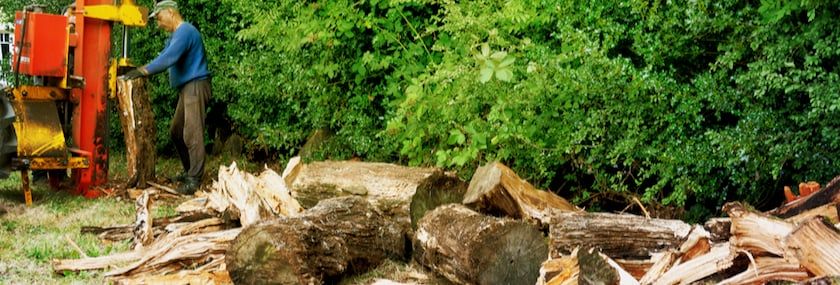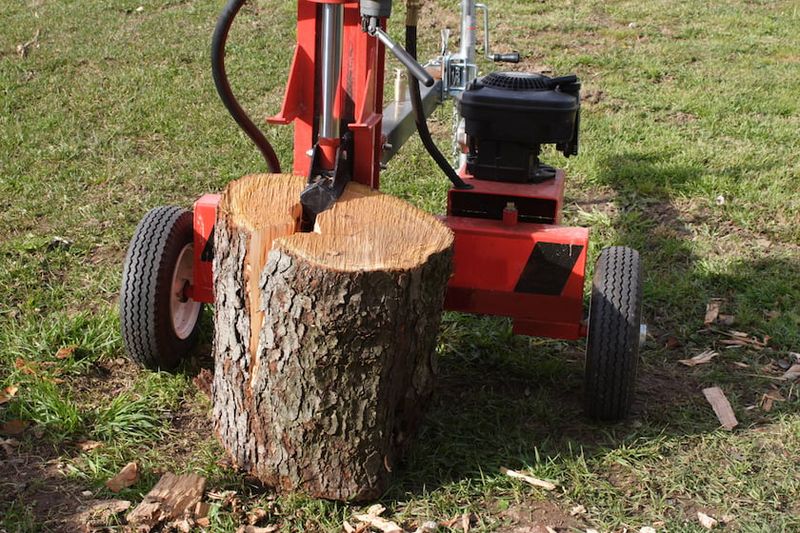What’s My Wood?


Turn forest into firewood with a log splitter
When you’re faced with stacking firewood, nothing makes the job easier than having properly prepared, split wood that fits together. But how do you choose the log splitter that’s right for you?
What’s your wood?
Hard species like oak require more power than, say, pine. Similarly, fresh (green) wood needs more power to split the fibers than seasoned (dried) logs. And of course, the larger the diameter, of the log, the more power needed.
How are log splitters rated for power?
When you wield an axe or maul, each swing brings about a ton—2000 psi—to bear on a log. A 10-Ton log splitter exerts 10 tons, or 20,000 PSI (pounds/sq. inch) at its point of contact with the log.
That’s enough to split about an 8-inch seasoned log.
How much power do I need?
In general, more tonnage is better than less, but you need to look at the wood you’ll be splitting.
A handy tabletop model (say, 10 tons) might work for small-diameter seasoned logs, but if you need to make a pile of firewood from various trees, go with more force, around 20 tons or higher.
If you are new to using a log splitter, consider renting one for a weekend before you decide

Gas or electric?
Electric splitters are ideal for those just needing to re-split wood they have had delivered. Many 5- to 10-ton electric splitters are small enough that they won’t won’t be in the way when idle.
Otherwise, most are gas-powered—or hydraulically powered from your tractor—and able to work away from the farmhouse.
Hydraulic or kinetic?
Both types of log splitter get the job done, but you need to look at cycle time and how hard you want to work.
Most hydraulic splitters require about 15-30 seconds per split— the time it takes for the wedge to fully extend to split a log and then return to its starting position.
A kinetic (or flywheel) log splitter uses a quick strike rather than sustained pressure and have a cycle time of just 1-3 seconds, meaning you can split wood as fast as you can handle it.
Tags:Tool Time

Acreage Life is part of the Catalyst Communications Network publication family.














